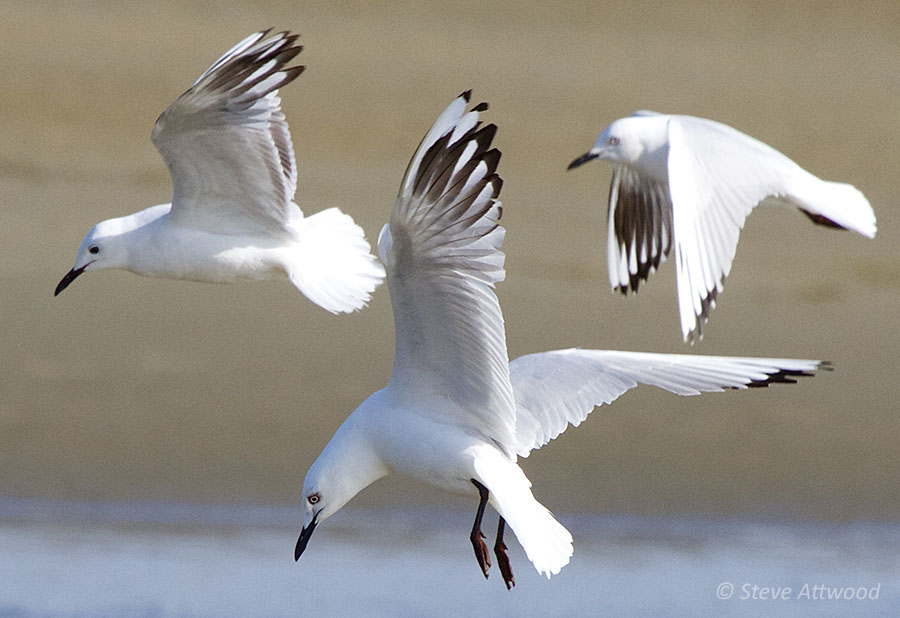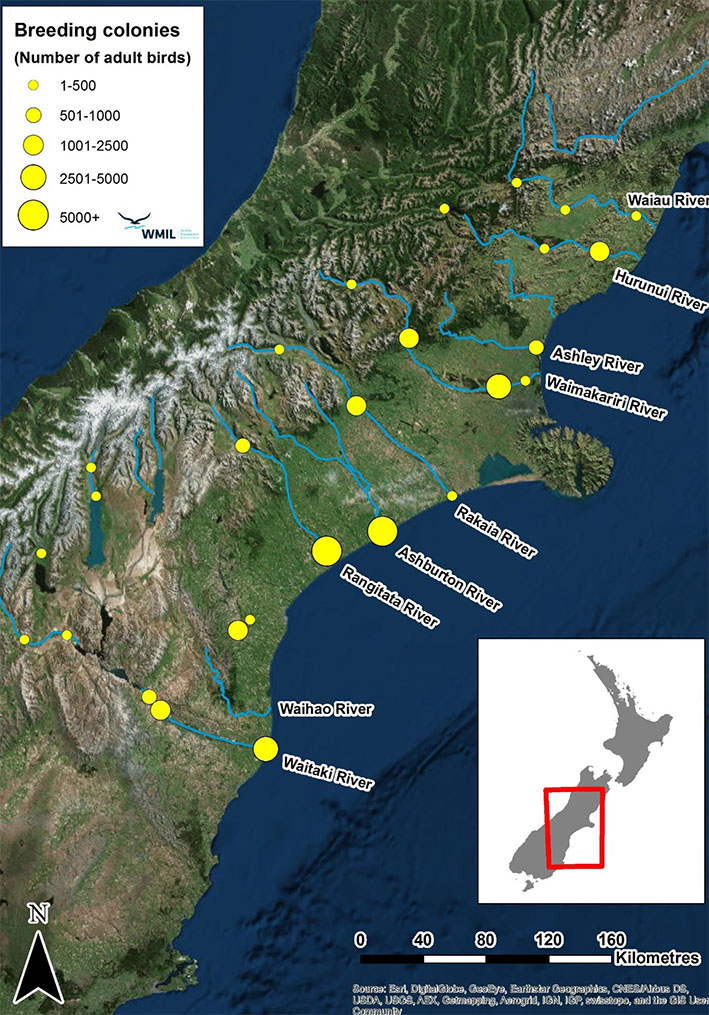Black-billed gull tarāpuku
Status: At Risk - Declining

While they still number in the thousands, their total numbers are rapidly declining. The majority nest in colonies in the South Island, primarily Southland, from August-February. Colonies often change from year to year on braided rivers through to single-channel rivers and streams with gravel beds.


Occasionally birds resort to nesting on adjacent farmland after major flood events or when they can find no suitable breeding habits on riverbeds.
In the North Island, the most well-known colony is on the shores of Lake Rotorua. Elsewhere in the North Island, black-billed gull | tarāpuka nest on coastal shell banks and sand spits. Recently, the breeding range has expanded in the North Island as far north as the Kaipara Harbour.
After the breeding season, most South Island birds migrate to the coast, though movement patterns are poorly known.
Description
Endemic (unique) to New Zealand, the black-billed gull (Larus bulleri) also known as Buller’s gull, tarāpuka, tarapuka (Māori), seagull, black-billed gull, and black billed gull, is a medium-sized gull measuring 35-38cm and weighing 230grams. Unlike other common gulls, black-billed gulls are not normally scavengers, and so they are less likely to be found in towns and cities.
The wings and back are pale grey, with white-tipped black margins to the main flight feathers. The eye-ring is black and the iris is white. The legs are black and the black bill is a relatively long and straight. Non-breeding adults have a bi-coloured bill, reddish at the base with a black tip and a line through the middle.
More information
- NZ Birds online (includes photos, sounds)
- NZ Birds
- iNaturalist
- Department of Conservation
Conservation efforts
- 2018: Mischler; Estimating the breeding population of black-billed gulls Larus bulleri in New Zealand, and methods for future count surveys
- 2017: New Zealand wide Population trends: 1995-2017 (BRaid seminar PDF)
- 2015-2016: Canterbury Population survey
- 2014-2016: Canterbury Population survey
- 2014-2015: Canterbury Population survey
- 2014-2016: Canterbury Population survey (single table summary: Note, the Ashley Colony was not on the river, it was on an adjacent farm. See the links on the next two lines for an explanation)
- 2016-2017: Ashley River gulls nesting successfully on adjacent farm paddock (timeline photos)
- 2018-2019: Waimakariri River Regional Park full report
- 2017-2018: Waimakariri River Regional Park full report
- 2016-2017: Waimakariri River Regional Park full report
- 2015-2016: Waimakariri River Regional Park full report
- 2014-2015: Waimakariri River Regional Park
- 2016/17: Ashburton
Research
- 2025: Row: Observations and dispersal of black-billed gulls (tarāpuka, Chroicocephalus bulleri) banded at North Canterbury, New Zealand, 1958–1974 and 1983 Notornis 72 pp 15-21
- 2018: Mischler; Estimating the breeding population of black-billed gulls Larus bulleri in New Zealand, and methods for future count surveys, Notornis, 2018, Vol. 65: pp67–83
- 2018: Mischler; Population status and genetic diversity of the endemic black-billed gull Larus bulleri of New Zealand (MA thesis University of Otago)
- 2017: Mischler; The national black-billed gull census (BRaid seminar)
- 2017: Davey & Ledgard; Gulls on a farm – colony of black-billed gulls successfully nesting in a paddock on a dairy farm (BRaid seminar)
- 2016: Rebergen; Changes in the number of black-billed gulls (Larus bulleri) nesting on the Ruamahanga River, Wairarapa, between 1998 and 2012. Nortonis, Vol 53: 50-53 (PDF)
- 2016: Jolly; Possible influences on nesting success of black-fronted terns and black-billed gulls on the Orari River (BRaid workshop)
- 2016: Smith; Population trends of black-billed gulls (Larus bulleri) on South Island rivers 1962-2014 (BRaid workshop)
- 2016: Mischeler & Bell; Results of Canterbury black-billed gull count 2015/16 (BRaid workshop)
- 2016: Langlands; Post breeding records of SBBG, black-billed gull, black-fronted and white-fronted terns at Canterbury River-mouths 2008 – 2015 (BRaid workshop)
- 2014: McClellan; How do we stop the decline of the world’s most threatened gull? (BRaid workshop)
- 2009: McClellan; The ecology and management of Southland’s black-billed gulls (PhD thesis – links to Otago University digital library)

